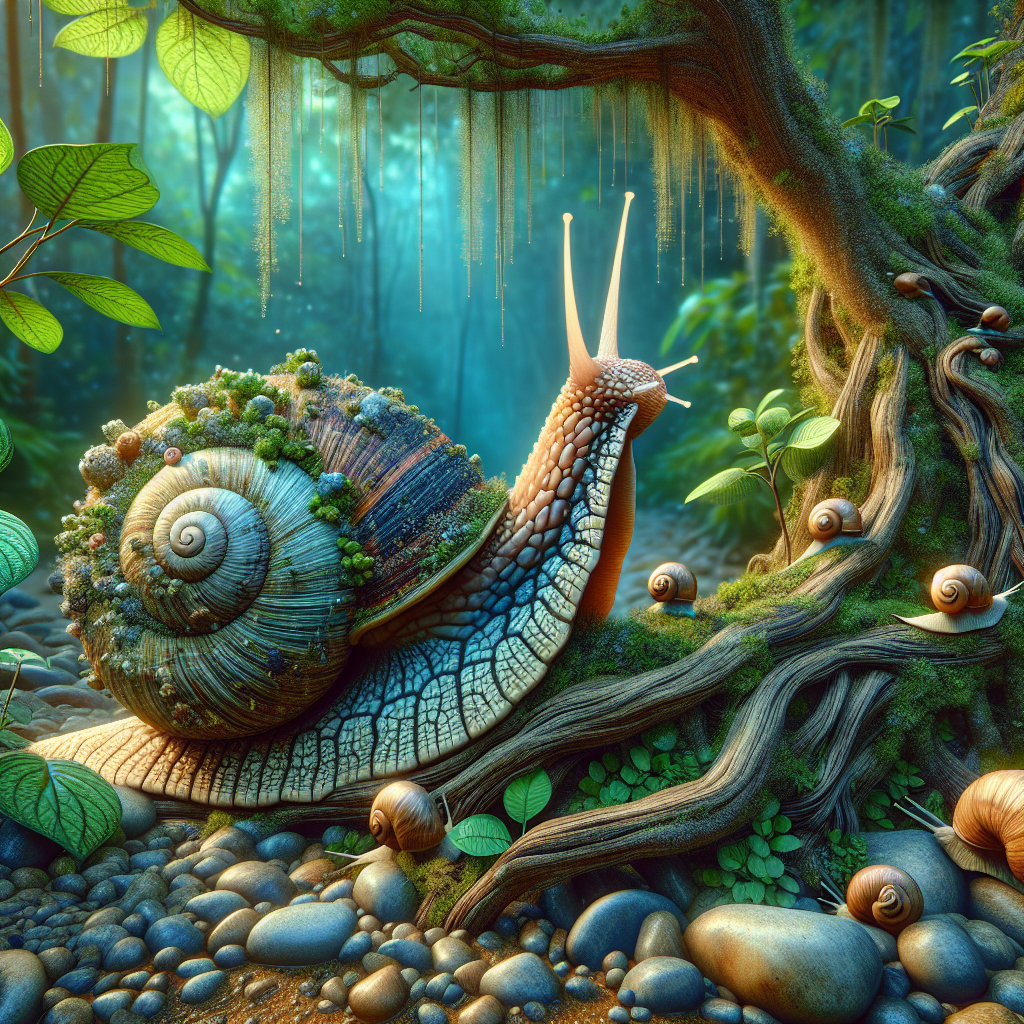What is Charopa, and why should we care?
Imagine stumbling upon a delightful little creature that is quietly playing its part in the balance of ecosystems: meet Charopa, a genus of small, terrestrial pulmonate gastropod mollusks. Found principally in the forested areas of Australia and New Zealand, these snails are not just another droplet in the diversity ocean but fascinating subjects of study for scientists and nature enthusiasts alike.
The Intriguing World of Gastropods
Before we zoom in on Charopa, let’s set the stage by exploring the broader family it belongs to, known as gastropods. With over 60,000 to 80,000 species, gastropods are one of the most diverse groups of animals. While they’re often overshadowed by their glamorous marine cousins, nudibranchs, terrestrial snails like Charopa contribute immensely to their environments.
The Role of Charopa in Ecosystems
These little gastropods might not boast dazzling colors, but their ecological roles certainly color their significance. Charopa species serve as decomposers, breaking down leaf litter and contributing to nutrient cycling within their habitats. By doing so, they support plant growth, benefiting the broader ecosystem. Additionally, they serve as prey for a variety of small predators thus cementing their place in the food web.
Adaptation and Survival
One of the fascinating aspects of the Charopa species is their adaptability. These snails exhibit a remarkable ability to live in a variety of environments, from damp soil on the forest floor to crevices within rocky outcrops. Their unique adaptations, including their shell structures and even their protective mechanisms against predators, make them a marvel of evolutionary ingenuity.
Conservation Concerns
While the resilience of Charopa is commendable, their existence is not without threat. Habitat destruction, mainly due to deforestation and urban development, poses significant risks to their populations. The invasive species, such as predatory beetles and ants, further exacerbate these threats. These challenges urge conservationists and policy-makers to consider protective measures and habitat restoration initiatives to secure the future of these fascinating creatures.
The Allure of Studying Charopa
For researchers and biologists, Charopa offers a goldmine of knowledge. Studying these snails can provide insights into evolutionary biology, adaptation mechanisms, and ecosystem dynamics. For instance, by understanding how Charopa adapts to changes within their environment, we can gain valuable lessons in resilience and adaptability that apply to broader ecological and conservation efforts.
Charopa and You: What Can You Do?
Given their essential roles in maintaining healthy ecosystems, drawing attention to the preservation of Charopa habitats is crucial. Engaging in or supporting conservation programs, promoting sustainable environmental policies, and raising awareness about these often-overlooked creatures are excellent starting points. Educating others about the ecological importance of even the smallest creatures can have a far-reaching impact.
The Future of Charopa
As we venture further into an era of environmental consciousness, every small contribution to biodiversity preservation holds significant value. Charopa, with its understated presence, highlights the incredible complexity and beauty of nature’s web, reminding us that every organism, no matter how small, plays a role in the grand tapestry of life on our planet. Humans, armed with knowledge and empathy, can be powerful allies in ensuring these charismatic snails continue to play their part in the world.
Embracing an optimistic outlook towards understanding and nurturing associations with the natural world will inspire innovations and solutions that benefit both humanity and future generations of all Earth's inhabitants.

